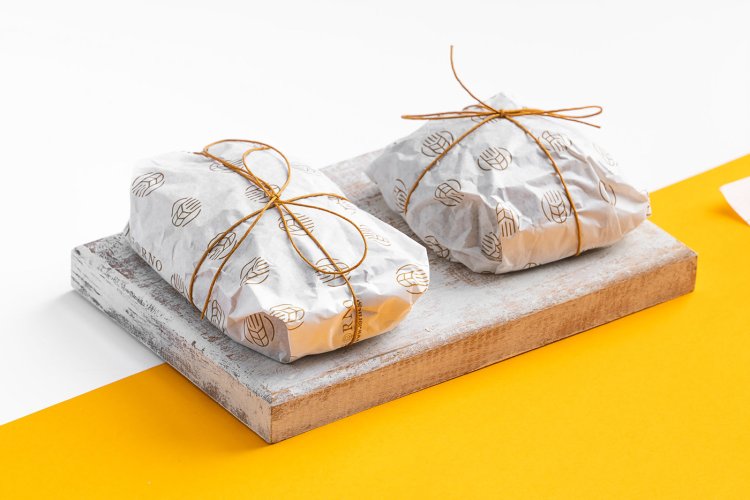What is Parchment Paper?
Parchment paper is a cellulose-based paper that has been treated with acid to give it a heat-resistant quality. Unlike regular paper, parchment paper is coated with silicone, making it non-stick and moisture-resistant. This unique composition allows it to withstand high temperatures, making it suitable for various baking tasks.
Non-Stick Surface
One of the primary benefits of using parchment paper is its non-stick surface. When baking cookies, cakes, or pastries, sticking can be a major concern. Parchment paper prevents baked goods from adhering to the pan, ensuring they come out smoothly without breaking apart. This is particularly helpful for delicate items like meringues and macarons.
Easy Release
With parchment paper, you can say goodbye to the frustration of stuck baked goods. When you line your baking sheets or pans with parchment paper, the items lift off easily after baking. This easy release not only saves time but also maintains the integrity of your creations, allowing for beautiful presentation.
Even Baking
Parchment paper can contribute to more even baking. It acts as a barrier between your food and the hot metal of the pan, which can sometimes cause uneven heat distribution. By using parchment paper, you can help ensure a uniform temperature around your baked goods, leading to consistent results. This is especially beneficial for cakes, as it can help prevent over-browning at the edges.
Improved Heat Distribution
The silicone coating on parchment paper helps distribute heat evenly. This is crucial for certain recipes, like cookies, where you want the edges to bake at the same rate as the center. Uneven baking can lead to cookies that are burnt on the outside and undercooked in the middle. Parchment paper improves the overall baking environment, allowing for better results.
Reduced Cleanup Time
Baking can often be a messy process, but parchment paper can simplify cleanup significantly. By lining your pans, you can avoid scrubbing stubborn bits of batter or dough stuck to the bottom. After baking, simply lift out the parchment paper, and your pans are left clean and ready for the next use. This efficiency can save you time and effort, allowing you to enjoy the fruits of your labor without the hassle of extensive cleaning.
Eco-Friendly Choice
In addition to reducing cleanup time, parchment paper can be an eco-friendly option. Many brands offer unbleached and compostable parchment paper, which can minimize your environmental impact. By choosing these products, you can feel good about your baking choices while still enjoying the benefits of this versatile material.
Versatility in Baking
Parchment paper is not just for lining baking sheets; its uses are extensive. You can use it for various baking tasks, including:
Lining Cake Pans
For cakes, lining the bottom of the pan with parchment paper can ensure a smooth release. Simply cut a circle of parchment to fit the bottom of the pan, grease it lightly, and pour your batter in. This technique is especially useful for layered cakes, where you want to maintain the shape and structure.
Making Pouches for Cooking
Parchment paper can also be used to create pouches for en papillote cooking. Wrapping fish or vegetables in parchment paper and baking them allows for steaming in their own juices, resulting in moist and flavorful dishes. This method showcases parchment paper's versatility beyond traditional baking.
Rolling Out Dough
When rolling out dough, parchment paper can serve as a protective barrier between your work surface and the dough. It prevents sticking and makes it easier to transfer the rolled-out dough to your baking sheet or pan. This technique is particularly useful for pie crusts and cookie dough.
Preventing Overbrowning
One of the common issues bakers face is overbrowning, especially with cookies and pastries. Parchment paper can help mitigate this by creating a barrier that reduces direct contact with the hot metal surface of the pan. This can lead to perfectly baked goods with a golden color instead of dark, burnt edges.
Adjusting Baking Times
When using parchment paper, you may notice that your baked goods require slightly different baking times. The paper can influence how heat is retained and distributed, so it’s essential to keep an eye on your items as they bake. Testing for doneness is crucial, as every oven and baking surface can vary.
Enhancing Flavor
Using parchment paper can also enhance the flavor of your baked goods. The even baking and moisture retention can lead to richer flavors, particularly in recipes that require longer baking times. For example, when roasting vegetables or baking fish in parchment, the flavors meld beautifully, creating a delicious outcome.
Infusing Aromas
When using parchment paper for en papillote cooking, you can add herbs, spices, and aromatics directly into the pouch. As the food cooks, the aromas are trapped, infusing the dish with flavor. This method can elevate your baking and cooking, making even simple recipes taste gourmet.
Tips for Using Parchment Paper Effectively
To maximize the benefits of parchment paper, here are some tips for effective use in your baking endeavors:
Choose the Right Size
Parchment paper comes in various sizes and can be cut to fit your needs. Make sure to select the right size for your baking pans to ensure proper coverage. If you’re using a larger pan, you can overlap sheets to cover all areas.
Grease Lightly
While parchment paper is non-stick, a light greasing can enhance its effectiveness, especially for sticky batters. Just a small amount of cooking spray or butter on the paper can help ensure a flawless release.
Store Properly
To maintain the quality of your parchment paper, store it in a cool, dry place. Keep it flat or rolled to prevent creases that can affect its performance during baking.
Avoid High Heat
While parchment paper is heat-resistant, it’s essential to avoid temperatures exceeding its recommended limits (usually around 420°F or 215°C). Always check the packaging for specific guidelines to prevent burning.
Conclusion
Parchment paper is a simple yet powerful tool that can significantly improve your baking results. From providing a non-stick surface to ensuring even baking and easier cleanup, its benefits are numerous. Whether you’re a novice baker or a seasoned professional, incorporating parchment paper into your baking routine can lead to better, more enjoyable outcomes. With its versatility and effectiveness, parchment paper is a must-have in any kitchen. So next time you bake, don’t forget to reach for this incredible tool to elevate your creations!
















